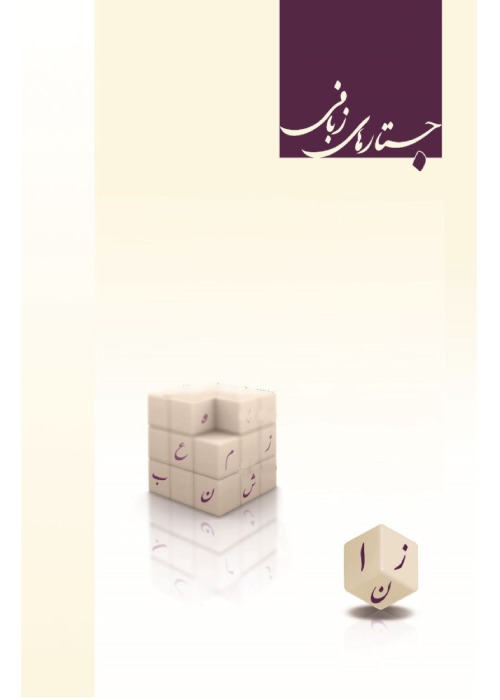Vowel Space in Hearing Aided, Cochlear Implanted and Normally Hearing Children
We live in a world of language and we communicate with each other using language (Fromkin et al., 2007). Deafness occurs when a person cannot understand speech through hearing, even when the sound is amplified. The degree of hearing loss is measured according to the sensitivity of deaf people’s ears to the sounds (Ganji, 2017) and then those people are asked to use hearing aids or do cochlear implantation surgery (Ebrahimi, 2006). Children have the opportunity to hear others’ speech during normal speech development while children with hearing impairment lose much of the auditory input, which may hinder speech development (Tseng et al., 2011 as cited in Serry and Blamey, 1999; Blamey et al., 2001; Peng et al., 2004; Bouchard et al., 2007). Different factors will affect speech development. One of these factors is DISABILITY, any disorder in hearing will affect speech and subsequently will cause problems in communication (Amiri et al., 2014). Some speech characteristics of children with hearing loss are different from each other and different from normally hearing children (Kord et al., 2012). GENDER is another factor affecting speech. While analyzing vowels produced by Azari speakers, Mirahadi et al. (2018) proved that men produce some vowels different from women. Vowel space is a vowel quadrilateral which is used to shows the first and the second formants. Phoneticians put vowels in the vowel space according to their position in the oral cavity, which was first introduced by Essner (1947) and Joos (1948) (as cited in Harrington & Cassidy, 1999). The first formant will increase as we go down the vowel space, it shows highness of tongue while producing vowels in the oral cavity. The second formant shows anterior or posterior position of tongue in the process of production of vowels in the oral cavity and will increase as we go to the left side of the vowel space (Hayward, 2013: 227, 228 & 502). The present study aims to compare the vowel space of hearing aided, cochlear implanted, and normally hearing children, with DISABILITY and GENDER as factors, in order to investigate the difference between the vowels produced by these children (Their average age was 10 years and 4 months and their participation in the study was optional, after getting permission from their parents.) and find out more effective hearing aid tools among two groups of children with DISABILITY (They did not have any mental or physical problems except hearing impairment and took part in language therapy classes for about 450 hours.), the group which makes vowels similar to normally hearing children will prove the effectivity of the hearing aid tools. So, the results will be useful for language therapists while helping children learn how to pronounce vowels. Therefore, the participants, 5 girls and 5 boys in each group, were asked to repeat thirty-six CVC framed words. Each word consists of one of the stops [p, b, t, d, k, g] in the onset and offset of the pattern and one of the Persian vowels [æ, e, o, a, i, u] in the center. Then the words were recorded using a Shure microphone in PRAAT software. After that, the first and the second formants of each vowel were measured and by using SPSS software the data was analyzed. The results showed that the effect of DISABILITY on the first formant of vowels [æ, a, i, u] and the second formant of vowels [a, e, o, u] was significantly different (p < 0.050). The results of a Post Hoc Bonferroni test showed that children with DISABILITY produced vowels [u, i, e, ᴂ] in a lower place in the vowel space comparing to normally hearings. Cochlear implanted children produced vowel [a] in a lower place and vowel [o] in a higher place in the vowel space comparing to normally hearings. Hearing aided children produced vowel [a] in a higher place in the vowel space comparing to normally hearings. All vowels in cochlear implanted children and vowels [ᴂ, a, e, i, u] in hearing aided children were produced in an anterior place in the vowel space comparing to normally hearings. The results also proved that the effect of GENDER on the first formant of vowel [a] and the second formant of vowel [i] was significantly different (p < 0.050). The results of a Post Hoc Bonferroni test revealed that the mean of the first formant of vowel [a] in girls was more than boys and the mean of the second formant of vowel [i] in girls was less than boys. It is also important to mention that hearing aided children had the smallest vowel space among three groups of participants while the vowel space of cochlear implanted children was not so different from the vowel space of normally hearings. So, language therapists have to try more to teach vowels to the children who use hearing aids comparing to the children who are cochlear implanted.
- حق عضویت دریافتی صرف حمایت از نشریات عضو و نگهداری، تکمیل و توسعه مگیران میشود.
- پرداخت حق اشتراک و دانلود مقالات اجازه بازنشر آن در سایر رسانههای چاپی و دیجیتال را به کاربر نمیدهد.



